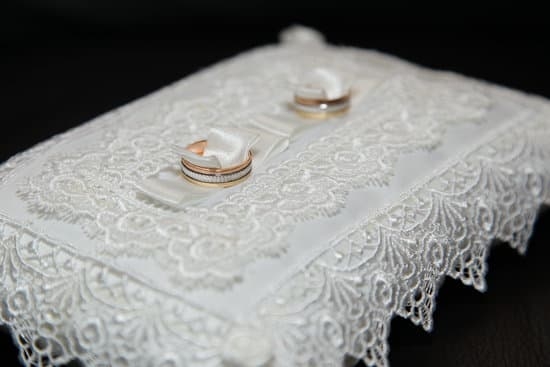Beaded jewelry has been a beloved form of adornment for centuries, cherished for its intricate designs and cultural significance. From ancient civilizations to modern fashion trends, beaded jewelry continues to captivate with its beauty and craftsmanship. In this article, we will delve into the world of beaded jewelry, exploring its significance and offering valuable tips on how to conserve these precious pieces for generations to come.
Conserving beaded jewelry is essential for maintaining its longevity and preserving its aesthetic value. Whether it’s a family heirloom or a contemporary accessory, understanding the importance of conservation is crucial in safeguarding the beauty of these intricately designed pieces. Proper storage techniques play a key role in preventing bead damage and deterioration, while regular cleaning and maintenance are essential for upkeeping the luster and vibrancy of beaded jewelry.
In addition to storage and maintenance, minimizing exposure to harsh chemicals and extreme temperatures is vital in ensuring the longevity of beaded jewelry. The delicate nature of beads makes them susceptible to damage from chemicals commonly found in household cleaners and skincare products. Furthermore, extreme temperatures can cause beads to expand or contract, leading to structural damage. By adopting proper care practices, you can protect your treasured beaded jewelry from unnecessary wear and tear.
Understanding the Importance of Conservation for Beaded Jewelry
Beaded jewelry has been a part of human adornment for centuries, from ancient civilizations to modern fashion. The intricate designs and use of various materials make beaded jewelry not only beautiful but also culturally significant. However, the delicate nature of beads and the potential for damage require careful conservation to ensure their longevity.
Conservation of beaded jewelry is crucial for preserving its historical and cultural significance. Many pieces of beaded jewelry hold important cultural or spiritual meaning, making their preservation essential for future generations. Additionally, antique or vintage beaded jewelry can hold significant monetary value, making proper conservation vital for maintaining its worth.
To ensure the longevity of beaded jewelry, proper storage techniques are essential. Storing beaded jewelry in a dry, cool environment away from direct sunlight can prevent bead damage and deterioration. This helps in avoiding exposure to harsh chemicals, extreme temperatures that can affect the integrity of the beads.
Preventing tarnishing and oxidation of metal components in beaded jewelry is also crucial for conservation efforts. Exposure to air and moisture can lead to discoloration and corrosion of metal parts in beaded jewelry. Using anti-tarnish strips or storing them in airtight containers with silica gel packets can help prevent these issues. Regularly cleaning and maintaining metal components can also aid in preventing tarnishing and oxidation.
| Storage Techniques | Metal Preservation |
|---|---|
| Storing in dry, cool environment | Using anti-tarnish strips or airtight containers with silica gel packets |
| Avoiding exposure to harsh chemicals and extreme temperatures | Regular cleaning and maintenance of metal components |
Proper Storage Techniques to Prevent Bead Damage and Deterioration
Choosing the Right Storage Container
When it comes to preserving beaded jewelry, the right storage container can make all the difference. It is important to opt for containers that offer protection from dust, moisture, and direct sunlight. Airtight containers or ziplock bags are excellent choices for preventing bead damage and deterioration. Additionally, utilizing soft pouches or padded compartments within a jewelry box can help prevent beads from rubbing against each other and causing abrasion.
Separating Different Types of Beads
It is crucial to store different types of beads separately in order to prevent damage and discoloration. Some beads are more delicate than others and can be easily scratched or chipped when stored with harder materials. Using small individual containers or compartments within a larger storage case can allow beads to be organized by type and material, thus minimizing the risk of damage.
Avoiding Direct Sunlight and Extreme Temperatures
Exposure to direct sunlight can cause colors to fade and materials to deteriorate over time. Therefore, it is important to store beaded jewelry in a cool, dark place away from direct sunlight. Similarly, extreme temperatures can also have a damaging effect on beads and their components. Storing jewelry away from areas prone to temperature fluctuations, such as attics or basements, can help preserve its integrity.
By following these proper storage techniques, you can effectively prevent bead damage and deterioration in your beaded jewelry collection. Taking these proactive steps will ensure that your cherished pieces remain in pristine condition for years to come.
The Significance of Cleaning and Maintaining Beaded Jewelry
Beaded jewelry is not only visually stunning but also holds significant cultural and historical importance. In order to preserve the beauty and longevity of these pieces, understanding the importance of conservation is crucial. One of the key aspects of conservation for beaded jewelry is proper cleaning and maintenance to prevent damage and deterioration.
Proper storage techniques play a vital role in preventing bead damage and deterioration. Here are some tips for preserving beaded jewelry through correct storage:
- Store beaded jewelry in a dry and cool environment to prevent moisture build-up that can cause beads to weaken or degrade.
- Avoid exposing beaded jewelry to direct sunlight as it can cause colors to fade over time.
- Consider using acid-free tissue paper or anti-tarnish strips when storing beaded jewelry to protect the beads from tarnishing and discoloration.
Cleaning and maintaining beaded jewelry is essential for prolonging its lifespan and preventing damage. Consider the following tips for ensuring the cleanliness and preservation of your beloved pieces:
- Gently wipe down beaded jewelry with a soft, dry cloth after each wear to remove any sweat, oils, or debris that may have accumulated.
- For more thorough cleaning, use a mild soap and lukewarm water solution to gently clean the beads, taking care not to submerge any metal components.
- After cleaning, ensure that the beaded jewelry is completely dry before storing it to prevent moisture-related damage.
By understanding how to conservation of beaded jewelry through proper cleaning, storage, and maintenance techniques, you can ensure that your cherished pieces remain beautiful and well-preserved for years to come.
Tips for Avoiding Exposure to Harsh Chemicals and Extreme Temperatures
Beaded jewelry is not just fashion accessories; they often hold cultural and sentimental significance. As such, it’s crucial to understand the importance of conservation for beaded jewelry to preserve their beauty and longevity. One crucial aspect of conservation is avoiding exposure to harsh chemicals and extreme temperatures that can result in irreversible damage.
To ensure the preservation of beaded jewelry, it is essential to store them away from direct sunlight and extreme heat or cold. Harsh temperatures can cause beads to expand or contract, leading to structural damage. Additionally, it’s important to keep beaded jewelry away from chemicals such as perfume, hairspray, lotions, and cleaning products as these substances can corrode metal components and weaken the stringing material.
When storing beaded jewelry, it is recommended to use a soft pouch or a lined jewelry box with separate compartments to prevent scratching or tangling. Beads made from materials like pearls and turquoise are particularly sensitive to chemical exposure and extreme temperatures; therefore, extra care should be taken when handling and storing them.
In addition to proper storage techniques, regularly inspecting beaded jewelry for signs of damage or wear can help in preventing potential deterioration. By adopting these practices for avoiding exposure to harsh chemicals and extreme temperatures, individuals can protect the integrity of their cherished beaded jewelry pieces for years to come.
Repair and Restoration
Beaded jewelry has been a prevalent form of adornment for centuries, with its cultural and aesthetic significance still cherished today. However, as time goes by, these intricate pieces can become damaged or deteriorate. Learning how to conservation of beaded jewelry is crucial for preserving their beauty and significance for generations to come.
Repair Techniques
When it comes to repairing damaged beaded jewelry, it’s important to have the right tools and materials on hand. For loose or broken beads, a strong adhesive specifically designed for jewelry-making can be used to carefully reattach them. Additionally, if the stringing material has become worn or frayed, restringing the beads onto a new and durable cord can offer a renewed lease on life for the jewelry piece.
Restoration Methods
For antique or heirloom beaded jewelry that has suffered significant damage or deterioration, seeking professional restoration services may be necessary. An experienced jeweler or conservator can assess the condition of the piece and provide expert restoration techniques to revive its original splendor while preserving its historical and cultural significance.
Preservation Tips
To prevent further damage to beaded jewelry and ensure its longevity, storing items in a cool, dry place away from direct sunlight and extreme temperatures is crucial. It’s also important to handle beaded jewelry with clean hands to avoid transferring oils and dirt onto the delicate surfaces. Regularly inspecting pieces for signs of wear and tear can aid in identifying any potential issues early on before they worsen.
Understanding how to conservation of beaded jewelry by utilizing proper repair and restoration techniques can help preserve these precious adornments for years to come. By taking proactive measures in caring for and maintaining beaded jewelry, individuals can continue enjoying their beauty while honoring their cultural significance.
Preventing Tarnishing and Oxidation of Metal Components in Beaded Jewelry
Proper care and conservation of beaded jewelry is crucial in preserving its beauty and longevity. This includes taking measures to prevent tarnishing and oxidation of the metal components used in the jewelry. Tarnishing occurs when metal becomes discolored or darkened due to exposure to air, moisture, or chemicals, while oxidation refers to the process of a metal being corroded or rusted. Here are some techniques for preventing tarnishing and oxidation of metal components in beaded jewelry:
- Proper storage: Store your beaded jewelry in a cool, dry place away from direct sunlight and moisture. Consider using anti-tarnish strips or pouches to protect the metal components from tarnishing.
- Avoid contact with harsh chemicals: Remove your beaded jewelry before swimming, showering, or using household cleaning products that contain chemicals such as bleach or ammonia. These chemicals can accelerate tarnishing and oxidation of the metal components.
- Regular cleaning: Clean your beaded jewelry regularly with a soft cloth to remove any dirt, oils, or sweat that can contribute to tarnishing. For metal components, use a specialized polishing cloth or solution designed for the specific type of metal.
By following these preventive measures, you can significantly reduce the risk of tarnishing and oxidation of metal components in your beaded jewelry. Taking care to store your jewelry properly, avoid exposure to harsh chemicals, and regularly clean your pieces will help maintain their beauty and longevity for years to come.
Remember that proper conservation practices not only preserve the visual appeal of your beaded jewelry but also protect its structural integrity and historical significance. By implementing these techniques for preventing tarnishing and oxidation, you can ensure that your cherished beaded pieces remain stunning and well-preserved for future generations to admire.
Conclusion
In conclusion, the conservation of beaded jewelry is essential in preserving its beauty and longevity. By understanding the importance of conservation and following proper storage techniques, cleaning maintenance practices, and avoiding exposure to harsh elements, we can prolong the lifespan of our cherished pieces. Preventing tarnishing and oxidation of metal components also plays a crucial role in maintaining the overall quality of beaded jewelry.
It is important to remember that repair and restoration techniques are available for damaged beaded jewelry, allowing us to continue enjoying our favorite pieces for years to come. By taking these proactive steps in caring for our beaded jewelry, we can ensure that it remains a timeless and meaningful accessory in our collection.
In summary, the value of conservation cannot be overstated when it comes to beaded jewelry. With proper care and attention, we can fully appreciate the intricate beauty and significance of these pieces while keeping them looking their best for generations. As enthusiasts of beaded jewelry, it is our responsibility to take the necessary measures to preserve these treasures for many years to come.
Frequently Asked Questions
How Do You Take Care of Beaded Jewelry?
Beaded jewelry should be handled with care to prevent damage. To clean it, use a soft cloth to gently wipe away dirt and oil. Store it in a separate compartment to avoid scratching the beads.
How Do You Keep Beads From Fading?
To prevent beads from fading, it’s best to keep them out of direct sunlight for extended periods. When storing them, use airtight containers or bags to shield them from light and moisture.
How Do You Sanitize Beads?
Sanitizing beads involves using a mild soap and water solution to clean off any dirt or grime. Gently rinse the beads and pat them dry with a soft cloth before allowing them to air dry completely. Avoid using harsh chemicals that could damage the beads.

Welcome to my jewelry blog! My name is Sarah and I am the owner of this blog.
I love making jewelry and sharing my creations with others.
So whether you’re someone who loves wearing jewelry yourself or simply enjoys learning about it, be sure to check out my blog for insightful posts on everything related to this exciting topic!





